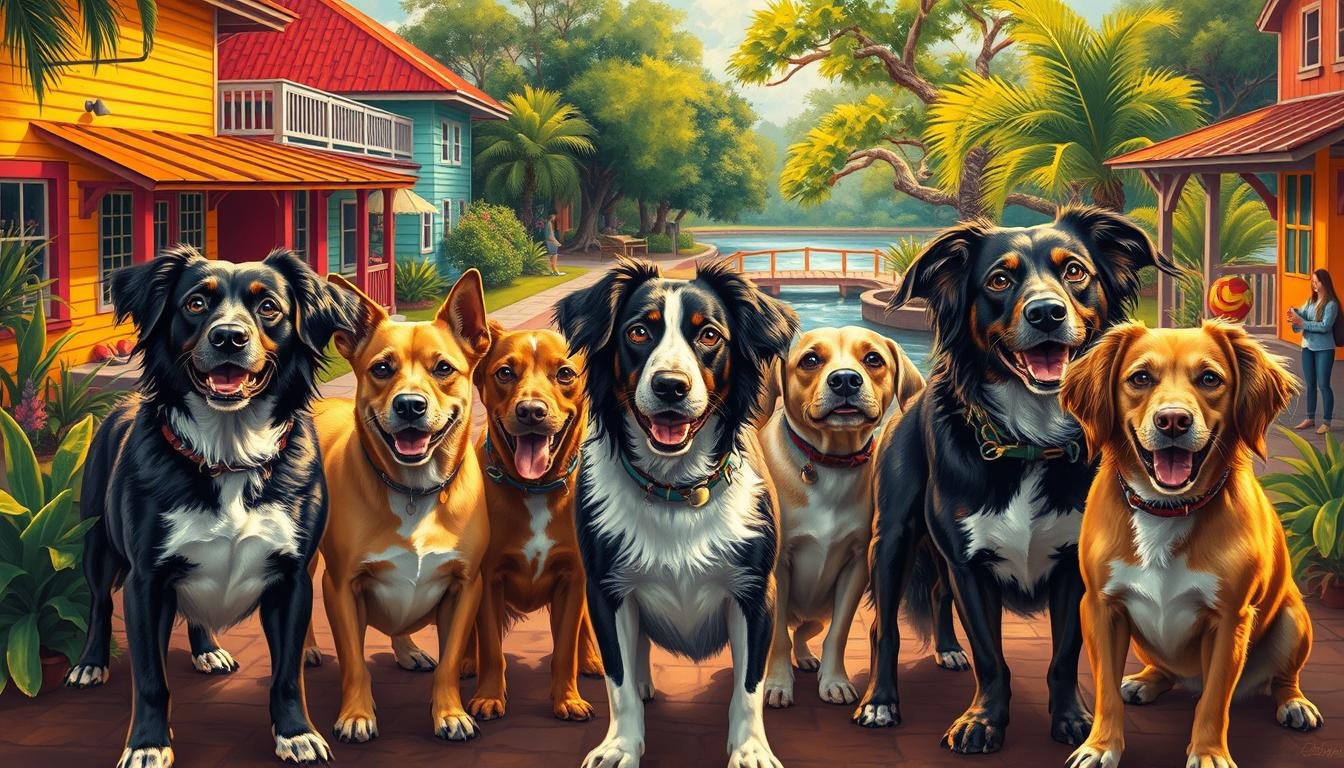There’s something magical about living with a fluffy, tricolor companion who thinks your couch is their throne. We’ve all fallen for those soulful eyes and that “just one more treat” head tilt—but behind those heart-melting moments lies a reality every owner should know. These Swiss-born gentle giants didn’t just bring their work ethic across the Atlantic; they also inherited traits that demand our attention.
Originally bred to herd cattle and pull carts through alpine valleys, these pups now prefer sunbeam naps and backyard zoomies. But their impressive size—some reaching over 100 pounds—comes with specific needs many first-time owners don’t anticipate. Their average lifespan of 7-10 years feels unfairly short compared to smaller breeds, making proactive care non-negotiable.
We’re not here to scare you with vet jargon or worst-case scenarios. Instead, let’s unpack how their history shaped their biology and what that means for modern pet parents. From their distinctive double coat to their surprisingly delicate joints, understanding these factors helps us create happier, healthier lives for our four-legged friends.
Key Takeaways
- Swiss heritage influences modern care needs
- Lifespan typically ranges 7-10 years
- Weight often exceeds 70 pounds
- Tricolor coats require specific grooming
- Calm temperament masks vulnerability
- Early prevention impacts quality of life
Introduction to Bernese Mountain Dog Health
Picture a four-legged diplomat wagging its way through modern homes while carrying centuries of alpine heritage in every pawprint. These tricolor ambassadors didn’t just trade yodeling shepherds for Netflix marathons—they brought along biological fine print that demands our attention.
Breed Overview and History
Originally bred to haul milk carts through snowy passes, today’s versions specialize in hauling laundry baskets off beds. Their transition from Swiss farmhands to suburban snuggle experts didn’t erase their genetic need for activity. That plush double coat? Perfect for -20°C winters, less ideal for July in Arizona.
Their calm demeanor hides surprising athleticism. While they’ll happily impersonate living room rugs, regular walks prevent joint stiffness and maintain muscle tone. That legendary patience with children stems from generations of working alongside farmers—though toddlers riding them like ponies wasn’t in the original job description.
Why Health Matters for Large Companions
Bigger isn’t always better when it comes to longevity. Their shorter lifespan compared to smaller breeds makes preventive care as crucial as belly rubs. Those soulful eyes might convince you to share pizza crusts, but their digestive systems prefer consistency over cheesy surprises.
Insurance becomes wise when dealing with breeds prone to specific conditions. Regular vet checks catch problems early, while proper nutrition supports bone density. Remember—every snowy pawprint on your floor represents generations of resilience. Let’s honor that legacy through informed care.
Understanding bernese mountain dog health issues

Owning one of these fluffy giants is like having a living teddy bear with a medical chart. Their sturdy frames hide vulnerabilities shaped by centuries of selective breeding—traits that made them exceptional workers but require modern vigilance.
Key Concerns and Risk Factors
Three main factors dominate their wellness journey:
- Genetic roulette: 1 in 4 develop histiocytosis, while cancer rates outpace most breeds
- Growth spurts: Puppies gaining 5+ lbs weekly strain developing joints
- Silent threats: Von Willebrand’s disease causes bleeding risks during routine surgeries
Orthopedic issues like hip dysplasia appear in 28% of adults—often before their fifth birthday. Bloat strikes suddenly, twisting stomachs like balloon animals. Even their iconic eyes face progressive retinal atrophy’s stealthy theft of vision.
Smart choices shift odds in their favor. Slow-feeder bowls combat gulping air. DNA testing screens breeding pairs. Weekly paw checks spot early swelling. We’re not fighting fate—we’re rewriting it through informed care.
Skeletal and Joint Challenges
Building a canine skyscraper requires flawless engineering—something these gentle giants didn’t quite receive in the blueprints department. Their impressive frames often come with structural hiccups that turn ordinary movements into uphill battles.
Hip Dysplasia Explained
Imagine trying to dance the tango with a loose doorknob for a partner—that’s daily life for dogs with hip dysplasia. The ball-and-socket joint becomes a mismatched puzzle piece, causing friction that leads to arthritis. Nearly 30% develop this condition, often showing symptoms like “bunny hopping” gaits or hesitation to climb stairs.
Elbow Dysplasia Insights
Front legs aren’t immune to design flaws. Elbow dysplasia turns simple walks into wincing marathons, with bone fragments grinding like gravel in a gearbox. While genetics load the gun, factors like rapid growth or excess weight often pull the trigger.
Smart management changes the game:
- Controlled diets slow growth spurts
- Low-impact exercise preserves cartilage
- Joint supplements act like biological WD-40
Catching subtle signs early—a slight limp after naps, reluctance to play fetch—lets us intervene before permanent damage occurs. Because nobody wants their living teddy bear to feel like they’re permanently carrying cinderblocks.
Life-Threatening Conditions to Watch For

Some emergencies don’t knock—they kick down the door with a stopwatch already ticking. For large breeds, two threats dominate the danger zone: one twists organs like a balloon animal, while the other spreads silently like ink in water.
Gastric Dilatation-Volvulus (Bloat) Risks
Picture a balloon inflating until it pops—except it’s your dog’s stomach. GDV strikes when the organ flips, trapping gas and cutting off blood flow. Deep-chested breeds are especially vulnerable, with symptoms progressing from restlessness to collapse in under an hour.
Common triggers include:
- Single daily feedings
- Elevated food bowls
- Post-meal zoomies
“A GDV patient’s survival drops 1% every minute after the first hour,” notes a 2023 veterinary study.
Cancer and Its Variations
Histiocytic sarcoma doesn’t play fair. This cancer appears in three forms:
| Type | Spread | Survival Rate |
|---|---|---|
| Localized | Single tumor | 6-12 months |
| Disseminated | Multiple organs | 2-4 months |
| Hemophagocytic | Blood system | Weeks |
Watch for sudden weight loss or disinterest in play. Early detection through routine checks can buy precious time—because severe cases often outpace treatment options.
We’re not just pet owners; we’re lifeguards armed with kibble and vet phone numbers. Knowing these risks lets us turn panic into action when seconds matter most.
Feeding and Nutritional Guidelines

Nutrition for these gentle giants isn’t about filling bowls—it’s about building biological armor. Every kibble choice shapes their ability to chase squirrels and outwit arthritis. Let’s crack the code on meals that do heavy lifting beyond calorie counts.
Puppy Diet vs. Adult Diet Strategies
Puppies grow faster than TikTok trends, but speed kills here. Their meals need military precision:
| Aspect | Puppies (Under 18 Months) | Adults |
|---|---|---|
| Meals/Day | 3-4 | 2 |
| Calcium % | 1.2-1.8% | 0.8-1.2% |
| Protein Source | Chicken/Lamb | Fish/Lean Beef |
Elevated bowls? Nope. Ground-level dining reduces air gulping. Slow feeders turn mealtime into brain games, preventing scarf-and-barf episodes.
Balanced Nutrition for Joint and Bone Health
Their skeletons need more TLC than a vintage car engine. Omega-3s act like WD-40 for joints, while glucosamine builds cartilage highways. Key ratios matter:
- 2:1 calcium-to-phosphorus balance
- EPA/DHA levels > 0.5% in kibble
- Controlled calories to maintain ideal weight
Vets recommend scales over scoops—measuring portions prevents “fluffy” becoming “fluffier.” Because carrying extra pounds strains joints like overloaded ski lifts.
Supporting an Active Lifestyle and Regular Care

Keeping these gentle giants thriving requires more than love—it demands strategic play and spa-level pampering. Their couch-surfing tendencies battle with biological needs forged in alpine pastures. Let’s crack the code on keeping them engaged without overloading those iconic frames.
Exercise and Behavior Tips
Think of activity as mental chess meets physical therapy. Puzzle toys stuffed with kibble turn mealtime into brain workouts. Short, frequent walks beat marathon sessions—their joints prefer TikTok-style attention spans.
| Activity Type | Benefits | Frequency |
|---|---|---|
| Swimming | Zero joint impact | 2x weekly |
| Nose Work | Mental stimulation | Daily 15min |
| Obedience Drills | Bonding + focus | 3x weekly |
Separation anxiety creeps in like uninvited houseguests. Counter it with:
- Departure cues (grabbing keys without leaving)
- Frozen peanut butter Kongs
- White noise during absences
Grooming and Maintenance Essentials
Brushing sessions double as health audits. That luxurious coat hides secrets—mats trap moisture, while skin flakes signal dietary gaps. Pro tip: Use undercoat rakes during shedding seasons unless you want fur tumbleweeds redecorating your home.
| Tool | Purpose | Frequency |
|---|---|---|
| Slicker brush | Topcoat maintenance | Every 3 days |
| Deshedding tool | Undercoat removal | Weekly |
| Dog-safe wipes | Paw cleaning | Post-walks |
Bathe every 3 weeks using oatmeal shampoo—their skin gets fussier than a toddler with a broccoli floret. Always check ears and paw pads during grooming. Redness? Time for vet tag-team.
Additional Health Challenges and Preventive Measures
Imagine your furry companion’s immune system as an overzealous security guard—sometimes mistaking pollen for public enemy #1. Beyond joint woes and tummy troubles, these gentle giants face stealthier adversaries requiring ninja-level vigilance.
Allergies, Autoimmune Issues & Kidney Concerns
Seasonal sniffles aren’t just human problems. Food sensitivities often masquerade as ear infections, while environmental allergies turn paw licking into Olympic events. Autoimmune disorders? They’re like cellular civil wars where the body attacks itself—think lupus targeting skin cells like misplaced artillery.
Kidney issues creep in silently. Watch for increased thirst or unexplained weight loss—subtle signs that filtration systems need troubleshooting. Blood tests during vet visits act as early-warning radars, catching problems before they escalate.
Smart prevention looks like this:
- Rotation diets to identify trigger foods
- Regular urine screenings for protein spikes
- Omega-3 supplements to calm inflammatory storms
We’re not just treating symptoms—we’re rewriting playbooks. Because every wagging tail deserves a defense strategy sharper than a squirrel’s escape route.




